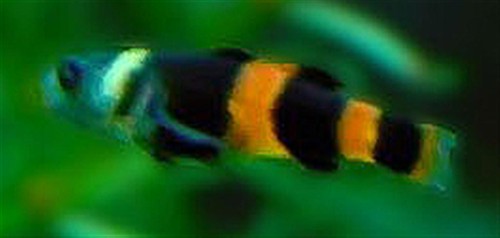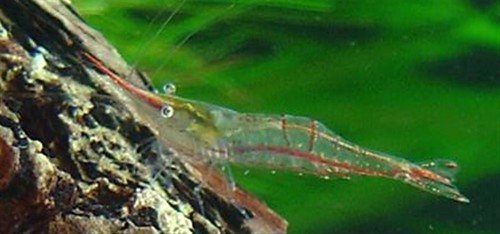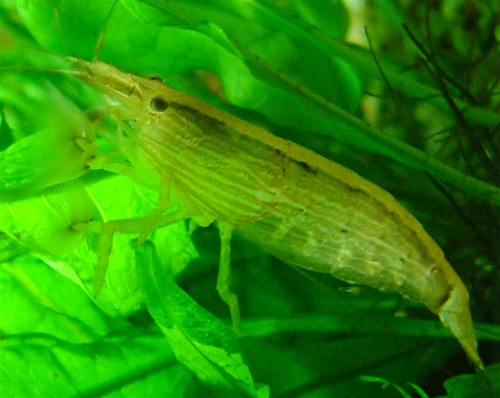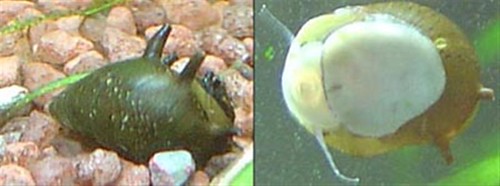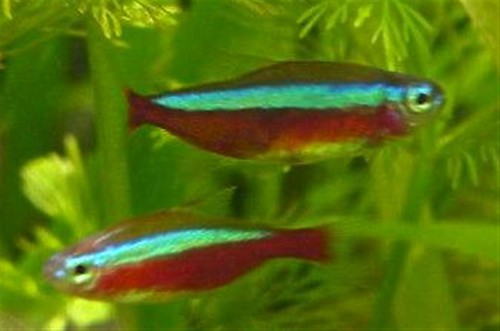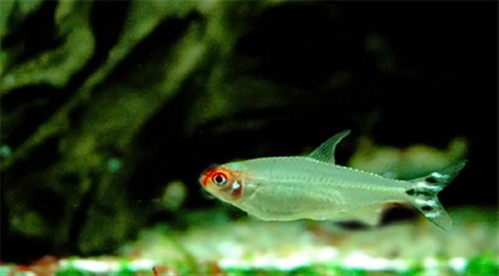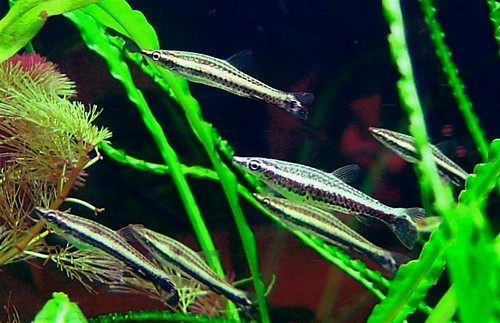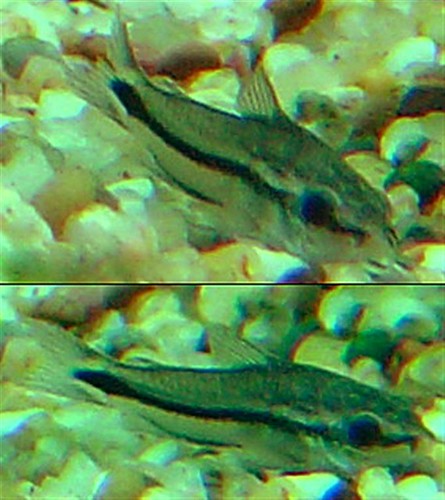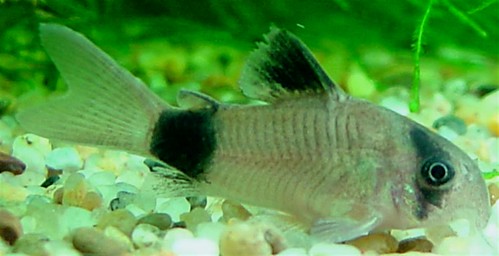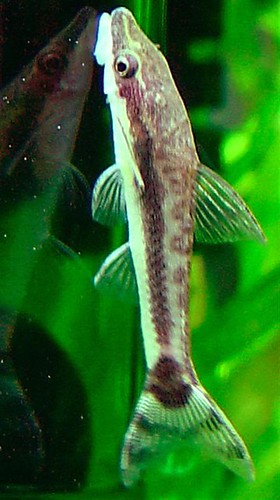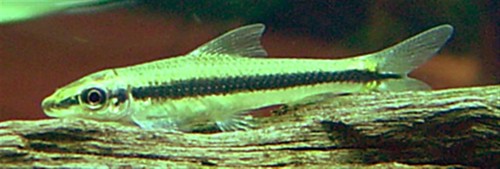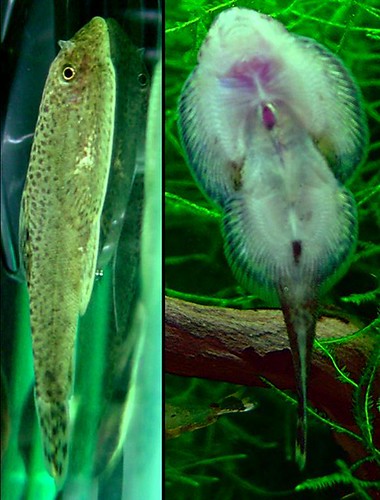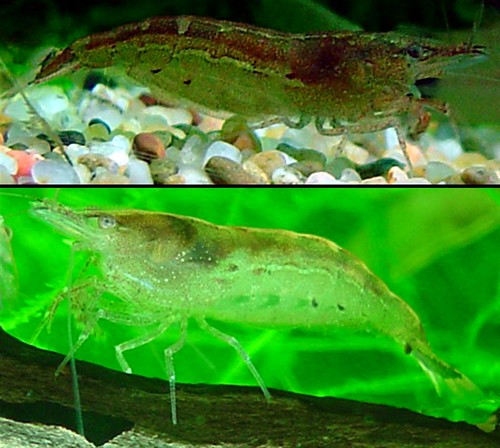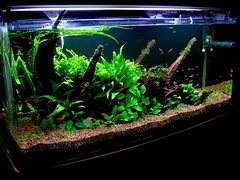Filter SystemA Filter System is required in most fish tanks to clear the dirt floating in the water in order to provide a clean environment for the fishes to live in, and for your viewing pleasure. The Filter System of the RH Fish Tank is no exception and it consists of a Canister Filter, Input pipe and the Surface Skimmer, and the Output pipe.
Canister FilterThe filter used in the RH Fish Tank is the Canister type (other types are: Overhead drip filter, Hang-on overflow filter, Internal filter, Bubble filter) , Brand/Model is
Eheim 2217 Jebao 615 (
click here to see Jebao 615), and it is situated in the cabinet. Inside the filter are many layers of filter material: Coarse sponge to filter our larger pieces of dirt, Finer sponge to filter out smaller particles, Coral Chip and Volcanic Rocks to condition the water, and a material which encourages the growth of beneficial bacteria.
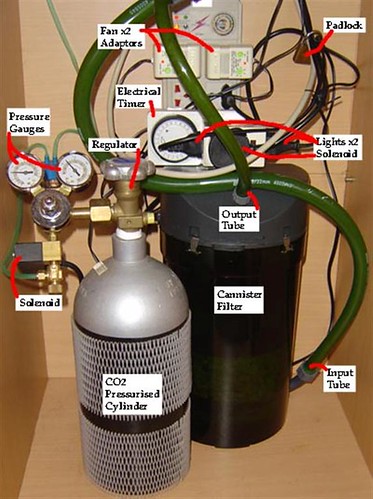 Bacteria?! Yes, bacteria.
Bacteria?! Yes, bacteria.Beneficial Bacteria (BB) is essential in any fish tank because although they are microscopic and invisible to the naked eye, they are an important part of the filtration system because physical filter media (filter sponge) will only remove dirt particles, but the BB will convert the poisonous Ammonia (a result of fish/shrimp waste) into harmful Nitrites, then converts these Nitrites into more tolerable Nitrates. The plants will utilise some of these Nitrates but over time the Nitrates will accumulate in the water, thus the requirement to change 10-20% of the water at least once a fortnight. Without the BB, the Ammonia and Nitrite level will be too high and the fish/shrimps will die.
Input Pipe and the Surface SkimmerAs the name implies, the Input Pipe takes water from the RH Fish Tank via the Surface Skimmer into the Cannister Filter. The Surface Skimmer sucks in water from the bottom through the filter sponge and from the top surface skimmer, removing dirt which floats on the surface. The Input Pipe and Surface Skimmer is situated on the Left of the RH Fish Tank in a corner.
 Output Pipe
Output PipeThe Output Pipe is a pipe with holes to spread the output of water, circulating the water throughout the tank.
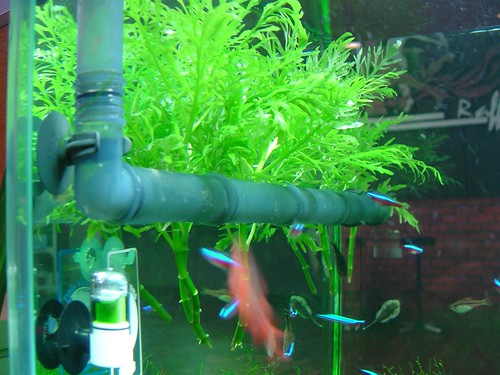 Carbon Dioxide (CO2)
Carbon Dioxide (CO2)All plants require CO2 to produce oxygen in photosynthesis, and the aquatic plants in the RH Fish Tank are no different (yes, the plants in the RH Fish Tank are real). It is essential for CO2 to be pumped into the RH Fish Tank because the CO2 produced by the respiring fishes is insufficient for the plants and without this external CO2 source, the plants will die. The CO2 set consists of a CO2 Cylinder, a Regulator w/Solenoid, and a CO2 Reactor.
CO2 Cylinder & Regulator/SolenoidA pressurised Carbon Dioxide (CO2) Cylinder is the source of the CO2 being pumped into the RH Fish Tank. Because the cylinder is pressurised (compressed CO2 inside) the CO2 output must be regulated by a regulator (similar in function to those used in diving equipment). The regulator has a Solenoid affixed, the purpose of the Solenoid is to turn on the CO2 output when the light is switched on (lights + CO2 = photosynthesis), and turn off the CO2 output when the light is switched off (no photosynthesis). The Solenoid is plugged into an electrical timer shared with the lights, switched on from 7-10am & 430-9pm daily.
[see picture in "Canister Filter"]
CO2 Reactor
This green cylindrical container inside the fish tank (on the left of the RH Fish Tank) is a device used to mix the CO2. The gas which spins inside the top of the reactor is CO2. The water which is expelled by the internal pump (black colour) expels water, spinning this water with the CO2 and forces the CO2 to mix with it. The black spinning balls in the reactor aids the dissolution of CO2 into the water. The water is then output through the black L-shaped hose at the bottom of the reactor. This CO2-rich water is then circulated around the tank, enabling the plants to utilise the CO2 for photosynthesis.
 Fans
FansPurpose: to lower the temperature of the tank water.
The average atmospheric temperature in RH is approximately 29deg Celsius, which is too high for the plants and shrimps. They prefer temperatures between 25deg-27deg. The two computer fans at the back of the tank increases evaporation, releasing the warmer water, thus cooling the overall water temperature to around 26deg-27deg, cool enough for the growth of the plants and for the comfort of the shrimps.
LightsPurpose: to illuminate the tank for your viewing pleasure, and for plants' photosynthesis.
There are 2 lights atop the RH Fish Tank and each light holds 3 light tubes of 36watts each. This makes it a total of 36x3x2 watts of light, more than enough for your clear viewing of the fishes, and for the plants' photosynthesis. These lights are plugged into an electrical timer in the cabinet and will be switched on from 7-10am & 430-9pm daily.
Food TimerPurpose: feed the fishes in the RH Fish Tank at 730am & 5pm daily.
The Food Timer contains fish food and will spin at pre-programmed times to drop food into the RH Fish Tank. As the timer on the Food Timer is not callibrated to the minute, please expect a +/-5min error in fish feeding timing. Please do not attempt to adjust the timer or it might malfunction with misuse.
IndicatorsThese small but useful devices help to warn us in the case of unwanted water properties...
pH IndicatorThe pH Indicator allows us to check the pH level of the water at a glance (with reference to the mini pH colour chart on the back of the RH Fish Tank). The ideal pH range is 6.5-7.
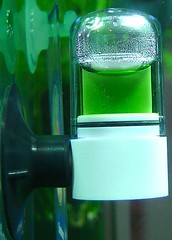 Ammonia Indicator
Ammonia IndicatorThe Ammonia Indicator allows us to check that the Ammonia level in the RH Fish Tank is acceptable. The round circle in the middle of the four colours (yellow, green, light blue, purple) changes colours according to the level of Ammonia in the water, Yellow is Safe - Purple is Toxic. The colour should always be yellow.
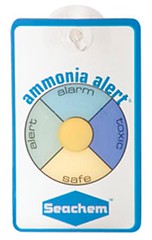
(Click to view all the equipment on Flickr)
